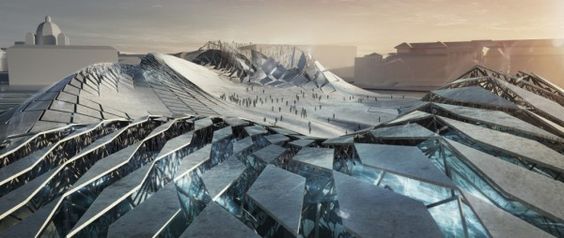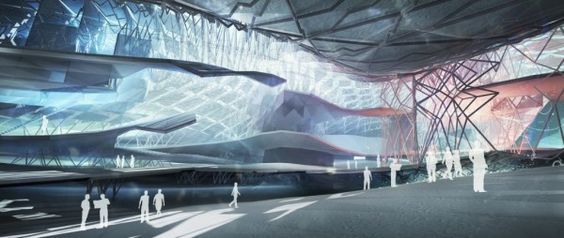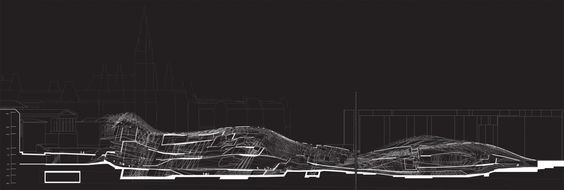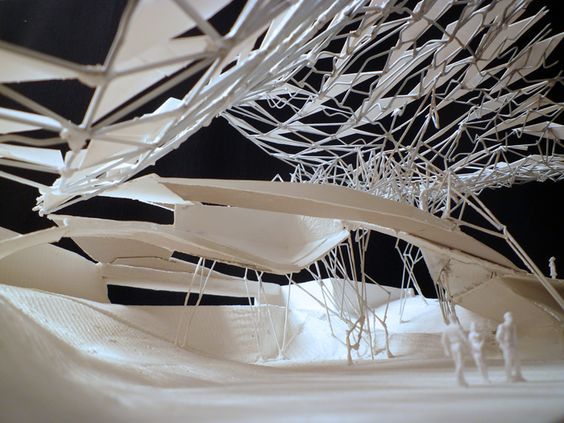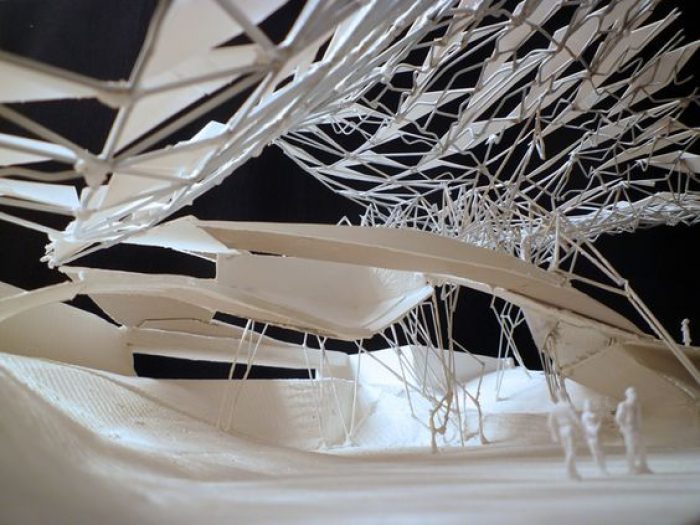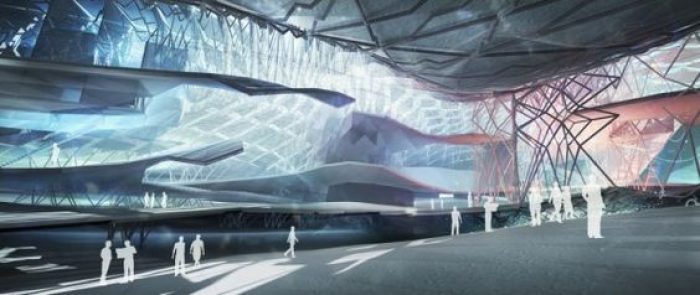Phillip Reiner shared this thesis project from Studio Prix, University of Applied Arts, Vienna. Project description from Reiner after the jump.
Context:
With the deep historical connection for a long time the Heldenplatz (Square of Heroes) has been the biggest and most important square of Vienna, but still lacks definition. The project aims to change the present usage (national holidays, political representation, military shows,…) to an urban field, open to public occupation and social desires.
The former Austrian National Library is situated in the Building of the Neue Hofburg. Mnemonic Code is an extension of the already planned underground archive and the amplification for the virtual retrieved data.
As in a digital library there is no physical connection to the consumed information, the topography does not only offer a variety of interactional platforms but a complex system that serves as a mnemonic to shift the fluctuating virtual data into a long time memory.
Strategy:
Overlaying unconnected grids, taken from the city, are conflated and evolved into a three-dimensional matrix. This code serves as a nutrient medium for a spatial population. Gravity, irradiance, draught and transmission work as dynamic forces to drive the parametric occupancy.
Programmatic relation is set by a definition of usage presumption and a set of various user profiles. Therefore spatial conditions are described by numeric values and connected to certain componential behaviors. In order to create the numeric-defined spatial desire the different parts (topographic surface, building structure, wall clouds) find a feedback related symbiosis of spatial interaction.
The relation of the locally defined fields program highly specialized and unique conditions at every location of the setup code. Outcome is a building hybrid in structure, organization, performance and relation to the external.
